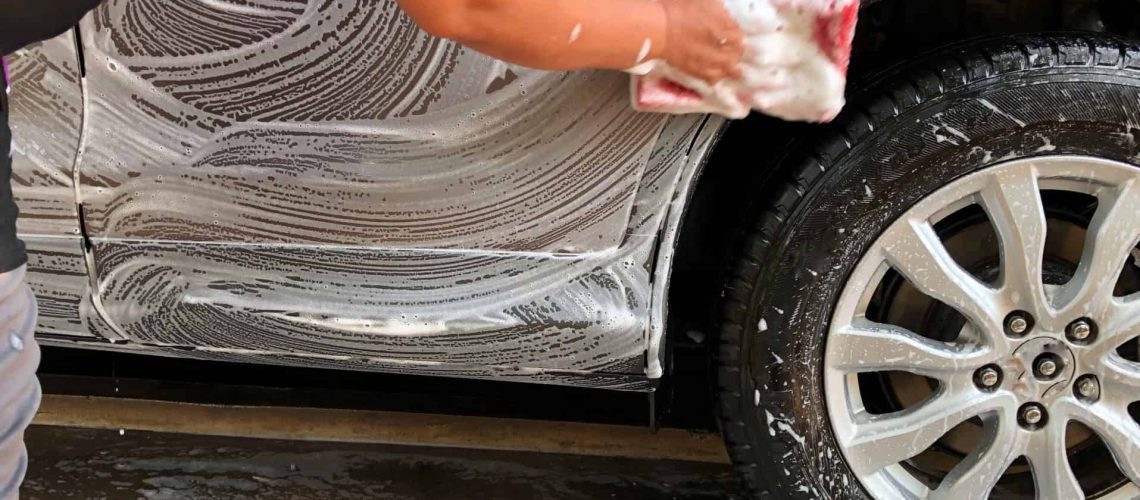Are you always worried about the many ways your vehicle could get dented? If you’re like most drivers, buying a car was a substantial financial investment, and you want to maintain as much of it as you can while still getting to use it. But every door ding and fender dent eats away at your vehicle’s value and pristine appearance.
If your goal is to minimize how much money you’ll spend on car dent repair, simply being a cautious driver isn’t enough. While being as safe as possible is always a good practice, other elements you can’t control can be just as likely to cause damage to your car and diminish your investment.
In this article, we’ll explain some of the most common (yet ignored) causes of dents and dings and how to best avoid them. By paying close attention to these scenarios and using our advice, you’ll help to preserve your car’s value as well as its stunning appearance. These simple steps are an easy way to minimize dent removal costs.
Contents
#1. Park in the Back of the Lot
When you drive somewhere like a supermarket or office, do you prefer to park as close to the entrance as you can? Many of us do, and it makes sense: the closer you are to the entryway, the less time you’ll spend walking across the lot to get inside. It’s more convenient and, in larger lots, potentially safer than parking farther away.
However, that convenience comes at a cost. The more cars you have to maneuver around to exit, the more chances you have to suffer a door dent or fender ding. Even vehicles that aren’t moving pose a threat to you as you make tight turns.
If protecting your vehicle is a priority, then parking in the back of the lot is ideal. Not only will you be closer to the road, but there will be fewer cars in your way when you exit. A longer walk to the building is a fair trade for saving money.
#2. Don’t Put Objects on Your Car
If you want to protect your car’s exterior, it only makes sense that you should minimize contact with it. Despite this, many of us use a car’s roof, trunk, or hood as a table or shelf. You may do this when you’ve finished shopping and are putting bags away or when you’re caught up in a conversation with a friend and put your purse or drink down for a moment.
Regardless of how small an object is, how light it may be, or how little time it spends on your car, it can cause dings or scratches. It’s not so much when you put the item down, which you probably do very carefully anyway. Instead, how you take it off can cause accidental damage: unless you’re lifting slowly and straight up, you’re probably dragging it.
Even if you can safely place and remove items from the top of your car, the better solution is to avoid putting anything down on it at all. No amount of practice can account for accidents or mistakes, so instead, avoid using your vehicle as a table or shelf entirely. Doing so is a simple way to prevent this common form of damage.
#3. Be Mindful of Your Surroundings
Wherever you choose to park, be it in a lot or a designated spot by a sidewalk, take time to survey your surroundings. Don’t assume that your vehicle is safe from harm just because you’re in a parking spot. If your surroundings are bustling with activity, the odds of someone or something damaging your car could increase.
Some areas are apparent, like playgrounds and sports fields, but others may require more thought to recognize. For example, are there empty parking spots in front of or behind you? If someone parks there before returning to your car, how easy will it be for you to get out?
Park indoors whenever possible to minimize environmental hazards. For situations where indoor parking isn’t available, try to assess what’s happening around you and gauge where the safest place to park is. Being proactive is necessary to protect your car.
#4. Practice Parallel Parking
Is there anyone out there who enjoys parallel parking? Of all of the joys you experience when driving, performing this tricky maneuver probably isn’t one of them. Even with innovations like onboard parking assist cameras, parallel parking is still a nerve-wracking experience.
While it would be nice to avoid having to parallel park entirely, it won’t always be possible. The best way to avoid damaging your car (and someone else’s) when parallel parking is to practice doing it more often. The better you get at it, the less stressful it will become.
The safest way to practice is on streets with low levels of traffic. If you aren’t too self-conscious about it, you could even practice with a driving instructor. Either way, it’s best to improve this complex skill, even if you don’t use it often.
Call JM Dent Repair
While you should always strive to be cautious and minimize risks, accidents can still happen. When they do, don’t fret over dents and dings to the body of your car. Instead, call on our team at JM Dent Repair.
We’re experts in how to get a dent out of a car, be it caused by simple fender benders or more extreme events like hail damage. With paintless dent removal, we can reverse the damage without having to repaint or use filler. Paintless dent repair costs less than traditional dent repair methods and consumes less time. Reach out to us now and learn more about how we can get your ride looking like new again.

